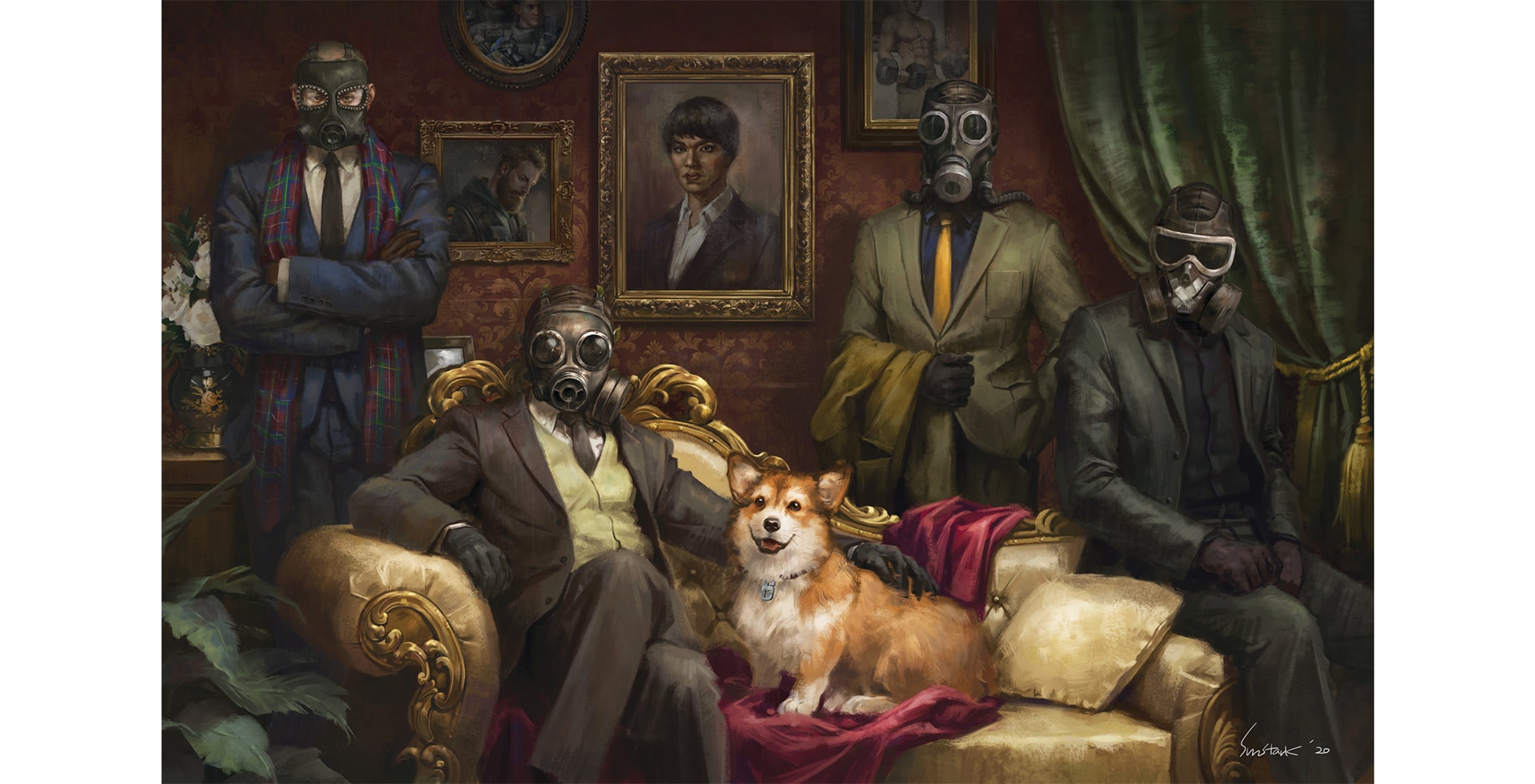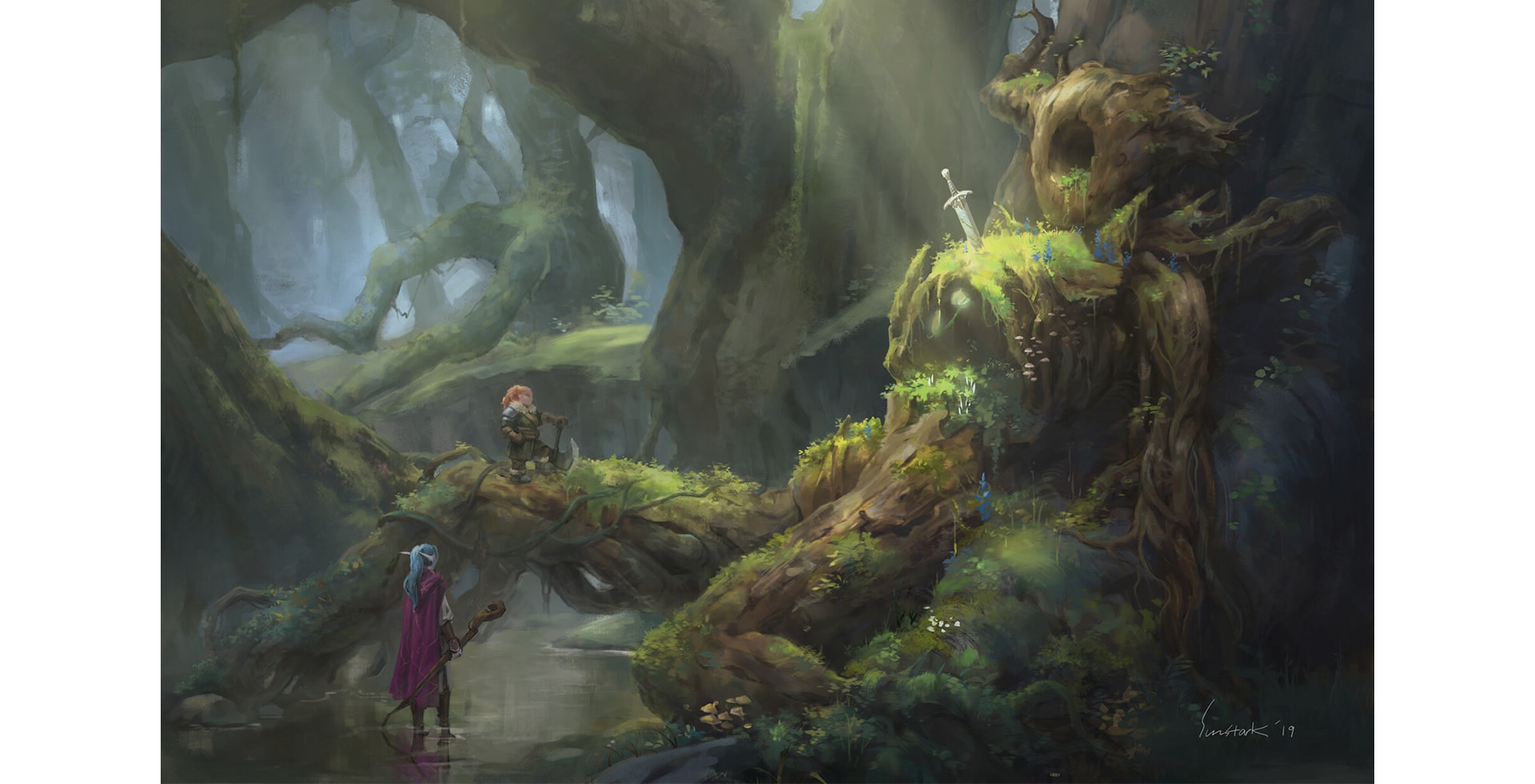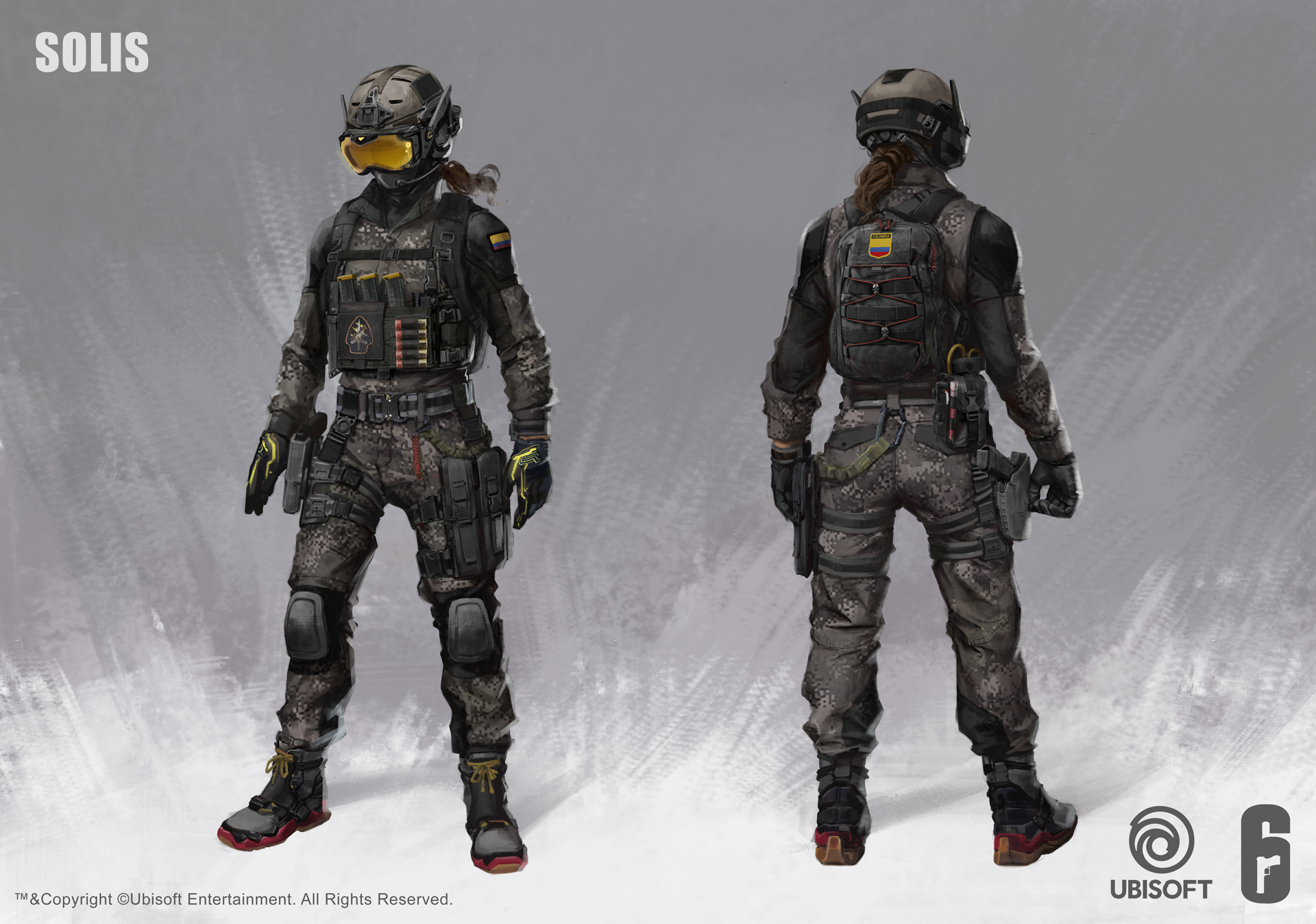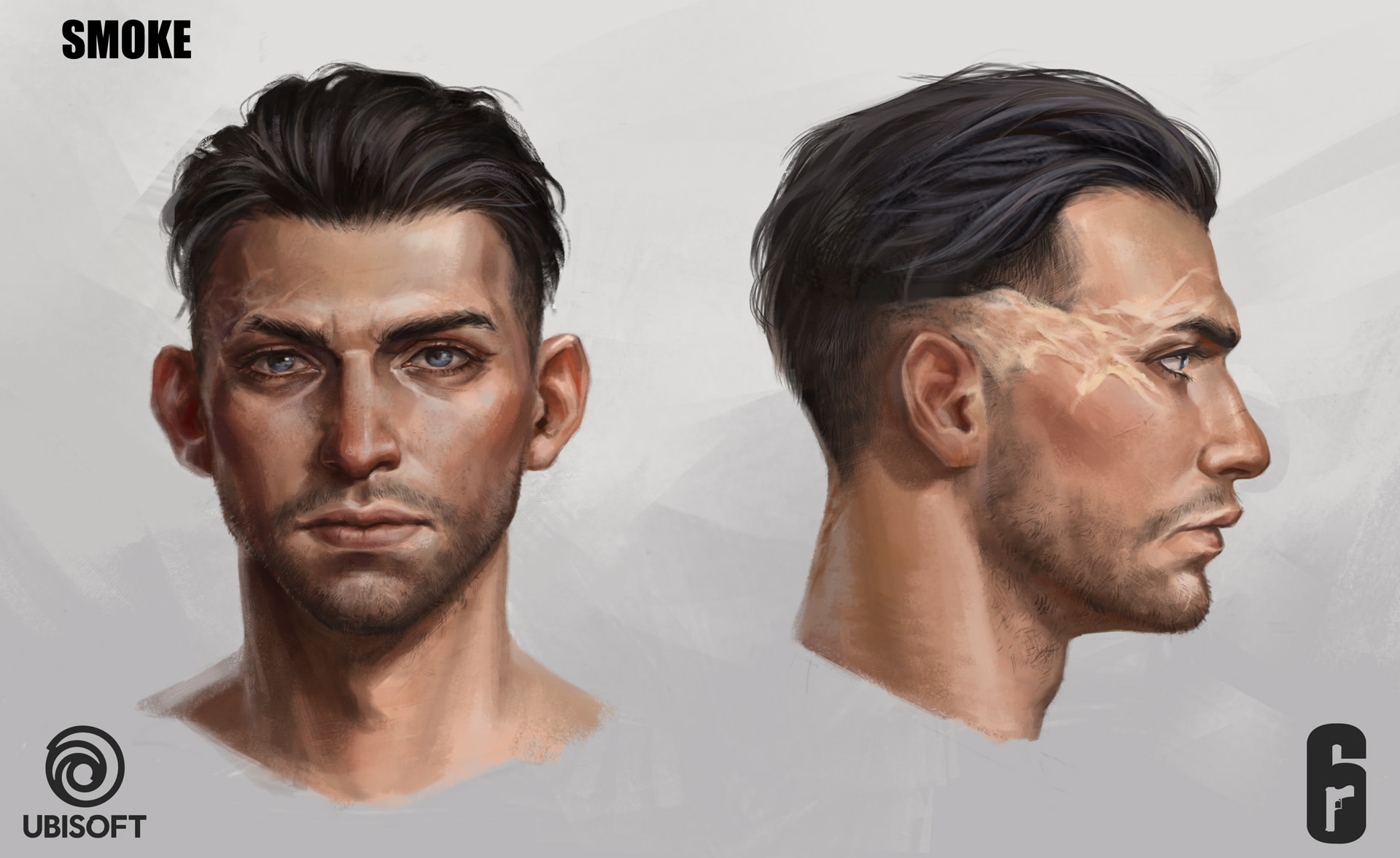Originally from South Korea, Sunshine Kim has had an amazing career. After traveling to Canada, Japan and Malaysia, she was hired as a concept artist at Ubisoft Montreal to work on Rainbow Six: Siege. All thanks to her beautiful fan art, which she has been publishing online for several years. She tells us her story and how her passion became her work.
After growing up in South Korea, Sunshine moved to Canada to study animation. After some time in Japan and Malaysia, where she developed her talents as an illustrator and specialized in concept art, she returned to Canada. She officially joined Ubisoft Montreal in 2022.
HOW DID YOU START PLAYING VIDEO GAMES GROWING UP IN KOREA? WHAT KIND OF PLAYER ARE YOU?
SUNSHINE KIM - I'm from the old NES generation. I was 5 or 6 years old when my mother gave me this console with Super Mario 3. But I was only allowed to play for about an hour a day, after I had done all my homework. Video games are very popular in Korea, but parents want their children to stop playing once they are “old enough”. My mother “convinced” me to sell my NES when I was eleven, and I slowly lost interest in games until high school. That's where I discovered Warcraft III, and then, after I finished high school, World of Warcraft, which really took up a lot of my time in my early 20s. I also used to go to arcades with my friends and play Tekken. But I wasn't good, and I was fine with that because I wasn't a competitive player, and it was just for fun. However, many of my friends played Warcraft competitively because the competition scene was already very popular in the country. They were researching, studying the whole game, making a list of items they needed, while I was traveling around the continent and taking nice screenshots... That's where I found what I liked.
HOW DID YOU DISCOVER R6S AND WHY DID THIS GAME BECOME SO IMPORTANT TO YOU?
S.K. - Another game I didn't mention is Call of Duty, which I discovered when I was studying animation in Canada. It was the game that made me want to work in the video game industry. In the early 2010s, a lot of games were trying to look like movies and were trying very hard to be realistic. I wondered how it was done, and I started reading and studying a lot about the video game industry in general. And Call of Duty really made me want to play other shooters.
Although a friend of mine told me about Rainbow Six: Siege, which had been out for a year, I didn't pay attention to it at first. My friend showed me the illustrations of the Siege characters to convince me, and I was immediately interested in the drawings of the operators. It wasn't 100% realistic as there was room for fantasy, but it worked, and each character was unique. I started playing but I was getting killed quickly at first. It wasn't like Call of Duty where you could respawn. But I kept going, and my first kill with R6 was really rewarding and I had never felt that kind of satisfaction in Call of Duty before. So, I wanted to play again. And I've never stopped since because I've never found another game as satisfying.

YOU MENTIONED THAT YOU CAME TO CANADA TO STUDY ANIMATION. WHY DID YOU CHOOSE THIS PATH?
S.K. - I went to school in Toronto on a 2D animation program. At the time, I wanted to work in film and animation, but I didn't know exactly what I wanted to do as I didn't know much about the industry. I was only 19 years old. I just liked to doodle, so I thought I wanted to be an animator and decided to study further in Canada with the support of my parents. It was crazy that they let me go there alone. But it took me three years to realize that I couldn't animate. I didn't like it; it wasn't rewarding enough. At the same time, I was becoming more and more passionate about painting, and I thought I would explore this area further.
And when I had to find a job, I applied for a bunch of animation jobs, including a concept artist job, even though I didn't think I was ready. But a studio contacted me for this concept and painting job. I went to the interview and learned that it was a Halo project. Three hours after the interview, I received an e-mail with an offer.
THE STORY OF YOUR RECRUITMENT BY UBISOFT MONTREAL IS QUITE FASCINATING. CAN YOU TELL US HOW IT HAPPENED?
S.K. - When I started playing Rainbow Six, I also started to paint fan art of the characters in the game. And at some point, I realized that a lot of Ubisoft developers were following me, which surprised me. Some of them contacted me to present my fan art at e-sports events. It was an honor for me. I also had the opportunity to design t-shirts for the Paris Major and the Six Invitational.
After working in Malaysia for a year and a half, I returned to Canada to await approval of my application for permanent residence. Then Covid came along, and I was in a phase where I didn't know what was going to happen in my life, especially because I had to return to Korea. But one of the game designers of Rainbow Six: Siege sent me a message, asking me to send him the link to my portfolio. I sent him my resume and portfolio, and two weeks later, I received an official letter from Ubisoft HR, telling me that they wanted to meet me for a concept Artist position on Rainbow Six: Siege. It took me a while to realize that it was real! That's when things got a little difficult because of Covid and my application for a residency permit in another province. This made it difficult to recruit me, but the team really wanted to work with me, so I was able to start working from Korea before coming back and officially joining the studio.

WHAT IS THE ROLE OF A CONCEPT ARTIST LIKE YOURSELF? AND WHAT IS THE PROCESS OF DESIGNING AN OPERATOR ON A GAME LIKE RAINBOW SIX?
S.K. - Every season we have a new operator to create. There are three concept artists working on this part of the game, and we take turns designing the characters. We also work on skins, illustrations or anything related to the artistic dimension of the character.
In general, we start our work with the gadget that the operator will use in the game. This is a central element of our game and of each operator. The game designers create this gadget and the storytelling team creates a prototype character that would use this gadget: they determine their country, gender, age and various basic biographical elements. From there, we have two parallel and overlapping aspects to work on. The authors are working on a more in-depth biography and on our side, we are starting to do sketches, making sure to discuss all together to keep iterating on the design until it is approved and sent to AD artists and 3D animators.
WHAT MAKES A GOOD OPERATOR? WHAT DO THEY NEED IN ORDER TO HAVE AN INTERESTING LOOK AND MAKE PLAYERS WANT TO PLAY WITH THEM?
S.K. - Some people don't really pay attention to the character's bio, to focus on their skills in game, and that's fine. They are competitive gamers, and they don't need to know this kind of information, they want to know how the gadget works. But I also know that there are a lot of players who are really interested in the history and background of our operators, especially if they come from their own country. And I'm one of those people as that's how I started playing R6. For me, a good character should visually match the brand image and the military fantasy of the game. The character should look like a soldier first and foremost. Gameplay, narrative, and art direction must speak the same language to create an operator that works and responds to the game lore.


WHAT DO YOU THINK ABOUT THE FACT THAT YOU STARTED WITH FAN ART AND ENDED UP CREATING OPERATORS FOR THE GAME YOU LOVE?
S.K. - It's more than just a job for me, it's something I really enjoy every day. I'm passionate about it. I am interested in the game, the characters, the imaginary world and the legacy we create. Before I joined the team, it was already a big part of my life, and I know it's a big part of the fans' lives, spending their free time talking about and creating things related to our game. I try to remember what attracted me in the first place, and that is that the operators are not soldiers with a generic design but with unique design elements. And that's something I have to keep in mind when working on a concept.
I also often receive messages from young artists who want to become concept artists and tell me how my work may inspire them. They tell me their personal stories, their hopes, and it is humbling for me to listen to their dreams. It's also strange for me, because I never thought I could be admired, because I am a fan first! But I really like these messages and I hope they will become the artists they dream of becoming.